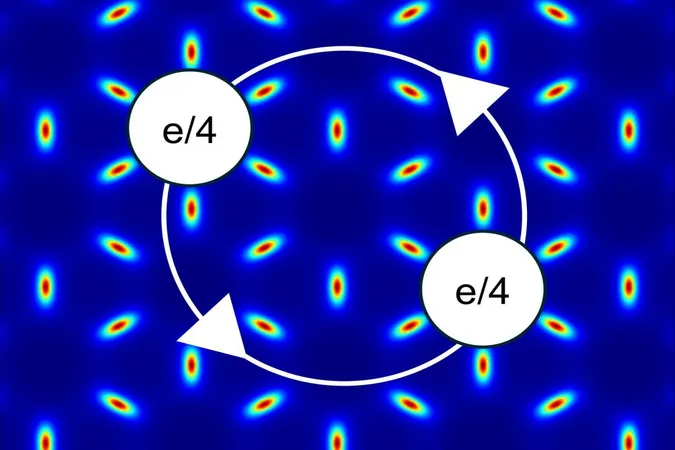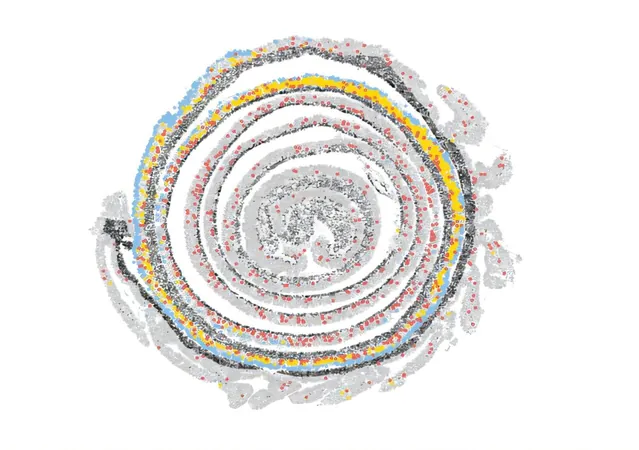
MIT Physicists Herald Breakthrough in Quantum Computing with the Discovery of Non-Abelian Anyons
2024-11-18
Author: Wei Ling
Introduction
MIT physicists have set the stage for a revolutionary advance in quantum computing, with a groundbreaking prediction of creating a new class of matter known as non-Abelian anyons. These exotic particles have the potential to serve as the fundamental building blocks—qubits—of future quantum computers that are anticipated to exceed the capabilities of current systems under development.
Background
This research builds upon a previous discovery from last year, where materials were identified that allow electrons to divide into fractional states—known as anyons—without the need for a magnetic field. This is a significant departure from the earlier findings of 1982, which relied on magnetism and earned the discoverers a Nobel Prize. The absence of a magnetic requirement enhances the practical applicability of these materials in future technologies.
Anyons and Their Forms
Anyons can manifest in different forms, notably as Abelian anyons, which were the focus of the 2023 findings at MIT. However, the recent paper published in the Physical Review Letters on October 17 discusses the theoretical possibility of generating the more complex non-Abelian anyons. According to Professor Liang Fu, who spearheaded the research, non-Abelian anyons possess a remarkable property; they can 'remember' their paths through space-time—a feature that could be leveraged for more stable and powerful quantum computing.
Encouragement for Theorists
Recent experiments not only surpassed theoretical expectations but also opened a floodgate of new research avenues. This encourages theorists in the field, as Fu remarked, "we theorists should be bolder." The collaborative effort included contributions from graduate students and postdoctoral researchers, emphasizing the pivotal role of academia in this breakthrough.
Collaborative Studies and Advances
In addition to MIT's exploration, other studies have also emerged around the same time—underscoring the collaborative nature of scientific inquiry. These advances in two-dimensional materials—extremely thin structures formed by stacking atomically thin layers—have been central to the evolution of new quantum states. Paul highlights the experimental promise of these moiré materials, noting their unique properties and potential to harbor different phases of matter.
Forming Non-Abelian Anyons
One of the key achievements described in the work is the ability to form non-Abelian anyons specifically within structures made of molybdenum ditelluride. Reddy explained that by introducing electrons at specific densities, a novel quantum state can emerge, leading to the formation of non-Abelian anyons.
Implications for Quantum Computing
As the quantum computing landscape evolves, the implications of this research extend beyond theoretical frameworks into practical possibilities. With companies and universities racing to develop viable quantum computers, the confirmation of non-Abelian anyons could unlock vast capabilities—enabling not just complex calculations but potentially revolutionizing cryptography, material science, and beyond.
Collaborative Funding in Research
The research was bolstered by significant support from the U.S. Air Force Office of Scientific Research, among others, underscoring the importance of collaborative funding models in modern science. As researchers continue to explore this uncharted territory, the coming years will likely unveil a plethora of applications drawn from these newfound quantum phenomena. Get ready for a future where quantum computing might just redefine how we interpret reality!



 Brasil (PT)
Brasil (PT)
 Canada (EN)
Canada (EN)
 Chile (ES)
Chile (ES)
 España (ES)
España (ES)
 France (FR)
France (FR)
 Hong Kong (EN)
Hong Kong (EN)
 Italia (IT)
Italia (IT)
 日本 (JA)
日本 (JA)
 Magyarország (HU)
Magyarország (HU)
 Norge (NO)
Norge (NO)
 Polska (PL)
Polska (PL)
 Schweiz (DE)
Schweiz (DE)
 Singapore (EN)
Singapore (EN)
 Sverige (SV)
Sverige (SV)
 Suomi (FI)
Suomi (FI)
 Türkiye (TR)
Türkiye (TR)